The Daikin AC Unit Install Guide provides step-by-step instructions for installing your Daikin air conditioning unit. Whether you’re a professional installer or a DIY enthusiast, this guide will help you navigate the installation process with ease.
From preparing the installation site to connecting the electrical components, this guide covers all the necessary steps to ensure a successful installation. Keep reading to learn more about how to install your Daikin AC unit and enjoy the comfort and energy efficiency it provides.
Tools Required For Installation
Are you planning to install a Daikin AC unit in your home or office? A smooth installation process is crucial for ensuring optimal performance and longevity of your air conditioning system. To help you achieve a hassle-free installation experience, it is essential to have the right tools at your disposal. In this guide, we will provide you with a comprehensive list of necessary tools and equipment to ensure a seamless setup of your Daikin AC unit.
List of Necessary Tools For A Hassle-free Installation
It is important to gather all the necessary tools before you begin installing your Daikin AC unit. Having these tools readily available will save you time and ensure a smoother installation process. Here is a list of tools you should have:
- 1. Power drill: This tool is essential for making holes in the walls to mount the AC unit and run wiring through them. Make sure you have the appropriate drill bits for the job.
- 2. Screwdriver set: A set of screwdrivers, including both flathead and Phillips head, will come in handy for fastening and securing various components during the installation.
- 3. Level: A leveling tool is necessary to ensure that the AC unit is properly positioned and mounted, preventing any possibility of it being tilted or crooked.
- 4. Tape measure: Accurate measurements are crucial for positioning the AC unit and for cutting holes in the walls for wiring. A tape measure will help you achieve precise results.
- 5. Wire strippers: When connecting the electrical wiring, it is important to carefully strip the wire insulation without damaging the wires themselves. Wire strippers are specifically designed for this task.
- 6. Pipe cutter: If your Daikin AC unit requires refrigerant piping, a pipe cutter will enable you to cut the pipes to the correct length, ensuring a proper fit.
- 7. Vacuum pump: A vacuum pump is necessary for removing any air and moisture from the refrigerant lines, ensuring efficient cooling and preventing damage to the system.
- 8. Refrigerant manifold gauge set: This tool helps you check and regulate the refrigerant pressure during the installation and commissioning process.
Must-have Equipment To Ensure Smooth Setup
In addition to the tools mentioned above, there are a few essential equipment and materials you’ll need for a smooth installation of your Daikin AC unit:
- 1. Mounting brackets or stands: Depending on the type and location of the installation, mounting brackets or stands may be required to securely support the AC unit.
- 2. Insulation tape: It is important to properly insulate the refrigerant lines to prevent any heat gain or loss. Insulation tape will help ensure efficient cooling.
- 3. Electrical wiring: High-quality electrical wiring is necessary to connect the AC unit to the power supply. Ensure that the wiring is rated for the appropriate voltage and current.
- 4. Refrigerant: If your Daikin AC unit requires refrigerant, make sure you have the specified type and amount on hand for proper charging of the system.
- 5. Safety equipment: Always prioritize safety during the installation process. Equip yourself with safety goggles, gloves, and a face mask to protect against any potential hazards.
By having all the necessary tools and equipment ready before you start the installation, you can ensure a smoother setup of your Daikin AC unit. Remember to follow the manufacturer’s installation instructions and consult a professional if you encounter any difficulties or uncertainties during the process.
Preparing For Installation
Before installing your Daikin AC unit, it’s essential to properly prepare the installation area. This ensures a smooth and efficient installation process, allowing you to enjoy the benefits of your new AC unit as soon as possible. In this section, we will guide you through the necessary steps for preparing your space, measuring and marking the correct position, and checking for any existing wiring or ductwork that needs adjustment. Let’s get started!
Clearing The Installation Area For The Daikin Ac Unit
Creating a clean and clutter-free space is vital for the installation of your Daikin AC unit. Before the installation team arrives, remove any obstructions, such as furniture, plants, or other objects that may hinder the process. A clear area not only allows the installers to work efficiently but also ensures optimal performance and air circulation for your AC unit once it’s installed.
Measuring And Marking The Correct Position For Installation
Accurate positioning of your Daikin AC unit is crucial for its effective functioning. Measure the dimensions of the unit and use a measuring tape to mark the correct position on the wall. Ensure that the marked location is appropriate for the unit’s size, taking into consideration ventilation requirements and clearances from nearby objects. By measuring and marking the correct position, you can help the installation team seamlessly install your AC unit.
Checking For Any Existing Wiring Or Ductwork That Needs Adjustment
Prior to the AC unit installation, it’s important to assess the existing wiring and ductwork in the installation area. Check for any potential obstructions or adjustments needed to accommodate the new AC unit. If there are any obstacles or alterations required, inform the installation team in advance to ensure a smooth installation process and avoid any delays. Ensuring the proper adjustment of existing wiring and ductwork guarantees optimal performance and airflow for your Daikin AC unit.
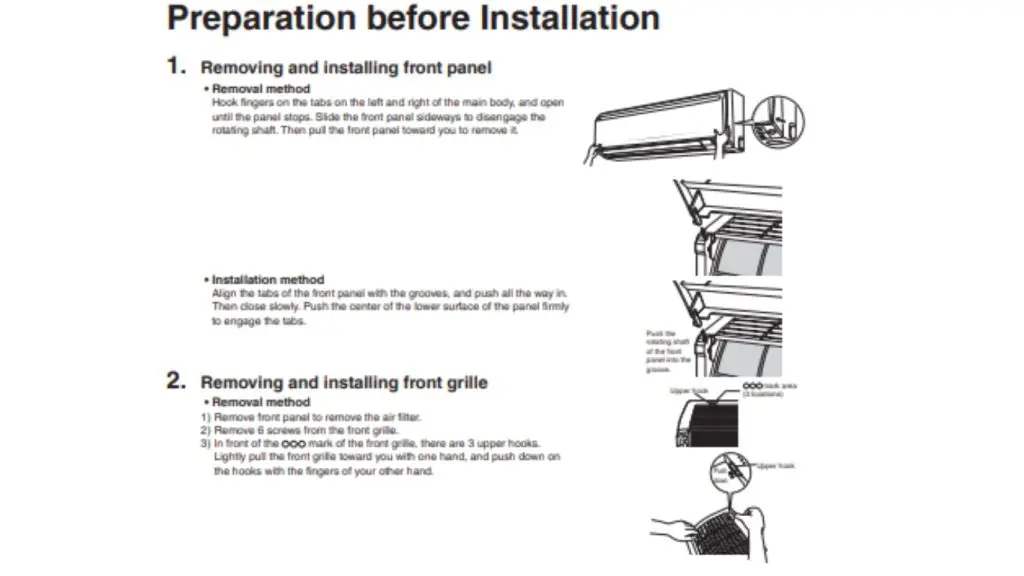
Mounting The Daikin AC Unit
Mounting the Daikin AC unit is a crucial step in the installation process to ensure proper functioning and longevity of your cooling system. In this section, we will guide you through the steps of securely positioning the mounting bracket on the wall, attaching the outdoor unit, and ensuring proper leveling and stability of the AC unit.
Positioning The Mounting Bracket Securely On The Wall
To begin, choose an appropriate location on the exterior wall of your home or building to mount the AC unit. Consider factors such as accessibility, proper airflow, and structural stability. Once you have identified the ideal spot, follow these steps:
- Use a stud finder or other appropriate tools to locate and mark the studs in the wall.
- Place the mounting bracket against the wall, ensuring it is level and aligns with the marked studs.
- Using the provided screws, securely attach the mounting bracket to the wall by driving the screws into the studs. Make sure the bracket is firmly attached and does not wobble.
Attaching The Outdoor Unit To The Mounting Bracket
Now that the mounting bracket is securely in place, it’s time to attach the outdoor unit of your Daikin AC system. Follow these steps:
- Lift the outdoor unit and align it with the mounting bracket.
- Slide the outdoor unit onto the bracket’s hooks or other attachment points. Ensure that the unit is properly seated and level.
- Secure the outdoor unit to the mounting bracket by tightening any screws or fasteners provided.
Ensuring Proper Leveling And Stability Of The Unit
Proper leveling and stability are essential for the optimal performance and efficiency of your Daikin AC unit. To achieve this, follow these additional steps:
- Using a level, check that the outdoor unit is completely level in both directions.
- If necessary, adjust the unit’s position by loosening the mounting bracket screws and making minor adjustments. Recheck the level and tighten the screws once the unit is properly leveled.
- Ensure that the unit is stable by gently shaking it and checking for any excessive movement. If the unit feels unstable, double-check the bracket’s attachment to the wall and make any necessary adjustments.
- Once the outdoor unit is securely mounted, connect the necessary electrical and refrigerant lines according to the manufacturer’s instructions.
By following these steps to securely mount your Daikin AC unit, you can ensure proper functioning and maximize the lifespan of your cooling system.
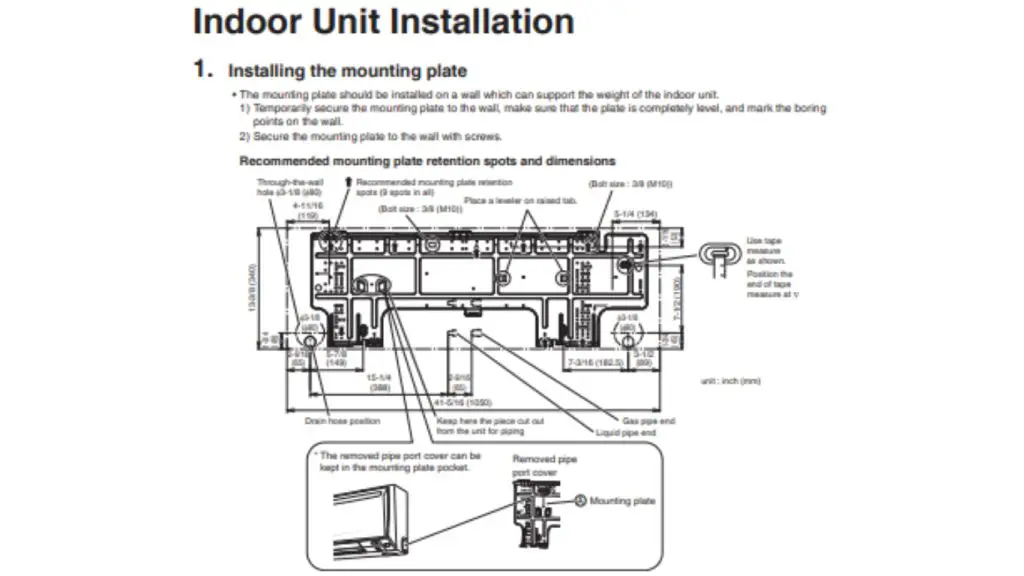
Electrical Wiring And Connection
One of the crucial aspects of installing a Daikin AC unit is understanding the electrical wiring and connection process. Proper installation and connection not only ensure the unit’s functionality but also prioritize safety. In this section, we will guide you through the essential steps involved in connecting the electrical wires to the main power supply, ensuring proper grounding, and conducting tests to check the functionality of the electrical connections.
Connecting The Electrical Wires To The Main Power Supply
When it comes to connecting the electrical wires of your Daikin AC unit to the main power supply, it is crucial to follow the specific guidelines provided by the manufacturer. Improper wiring can lead to malfunctions, electrical hazards, and potential damage to the unit. Here’s a step-by-step guide to get you started:
- Before proceeding with any wiring, ensure that the power supply is turned off to avoid any accidental electric shock.
- Identify the wires that are responsible for supplying power to the unit. The colors of these wires may vary depending on the specific model or manufacturer.
- Strip off the insulation from the ends of the wires using a wire stripper, typically around 1/2 inch.
- After stripping the ends, connect the wires to the corresponding terminals of the main power supply. It is essential to match the color coding to ensure the correct connection is made.
- Tighten the screws on the terminals securely to establish a stable connection.
- Once the connection is complete, double-check the wiring to ensure there are no loose or exposed wires.
Proper Grounding To Ensure Safety
Proper grounding is essential when installing a Daikin AC unit to ensure safety and prevent electrical accidents. Grounding provides a path for electrical faults and eliminates the risk of electric shock. Here are the steps to ensure proper grounding:
- Locate the dedicated ground wire provided with the AC unit, usually color-coded green or green with a yellow stripe.
- Connect the ground wire to the grounding terminal in the main power supply box.
- Tighten the screw on the grounding terminal securely to establish a solid connection.
- Ensure that the other end of the ground wire is securely connected to a metal part of the AC unit or a designated grounding point.
- Inspect the grounding connection to ensure it is tight and secure.
Testing The Electrical Connections For Functionality
Testing the electrical connections is crucial to ensure the proper functionality of your Daikin AC unit. Conducting these tests not only ensures the safe operation of the unit but can also help diagnose any potential issues. Follow these steps to test your electrical connections:
- Turn on the main power supply and switch on the AC unit.
- Ensure that the unit’s power indicator lights up, indicating that the electrical connections are functional.
- Verify that the fan and compressor of the AC unit are running smoothly.
- Measure the voltage across the supply terminals to check if it matches the recommended voltage stated in the unit’s manual.
- Inspect the connection points again to ensure there are no signs of overheating or loose connections.
By following these steps, you can confidently install and connect the electrical wires of your Daikin AC unit, ensuring proper functionality and prioritizing safety. Proper wiring, grounding, and testing will provide you with a cool and comfortable environment all year round.
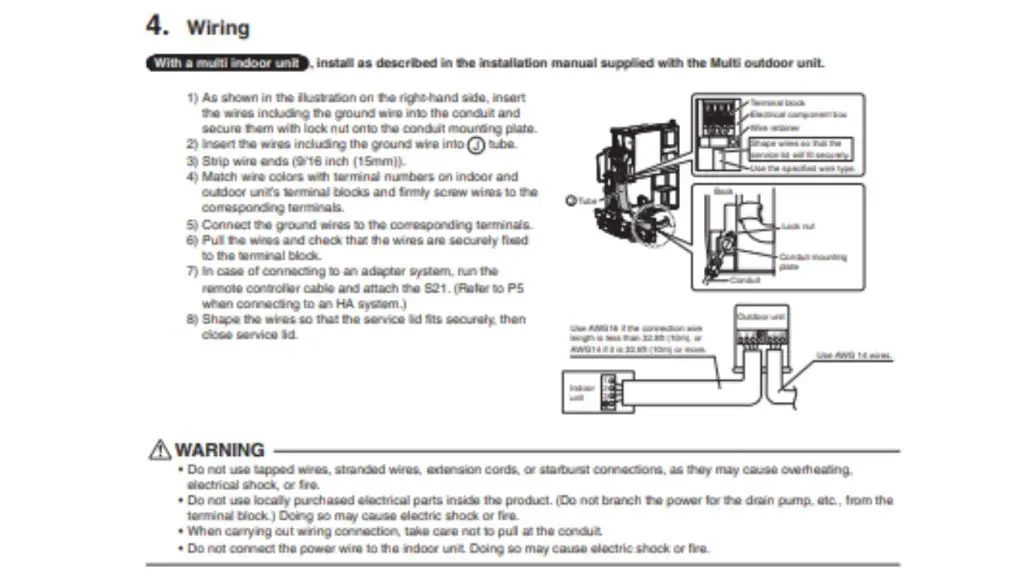
Refrigerant Piping And Insulation
One of the critical components of installing a Daikin AC Unit is properly handling the refrigerant piping and insulation. This ensures optimal performance, efficiency, and overall functionality of your air conditioning system. In this section, we will discuss the key steps involved in routing the refrigerant pipes from the outdoor unit to the indoor unit, insulating the pipes to prevent condensation, and ensuring there are no leaks or loose connections.
Routing Refrigerant Pipes From The Outdoor Unit To The Indoor Unit
The routing of refrigerant pipes is a crucial aspect of the installation process. It involves connecting the outdoor unit, which contains the compressor and condenser, to the indoor unit, which consists of the evaporator coil and the blower. Here are the steps to follow:
- Identify the suitable path: Assess the indoor and outdoor areas to determine the best route for the refrigerant pipes. Ideally, the distance between the two units should be minimal to ensure efficient cooling.
- Measure and cut the pipes: Take precise measurements to determine the appropriate length of the refrigerant pipes. Cut the pipes accordingly, making sure to leave some extra length for adjustments during the installation process.
- Attach the pipes to the units: Connect one end of the refrigerant pipes to the outdoor unit, ensuring a secure and tight fit. Then, carefully pass the pipes through designated holes or channels, and attach the other end to the indoor unit, using appropriate fittings and fasteners.
Proper routing of the refrigerant pipes is essential for the system’s overall performance and efficiency. Efficient routing minimizes pressure loss and ensures proper refrigerant flow between the units, leading to optimal cooling results.
Insulating The Pipes To Prevent Condensation And Maintain Efficiency
After routing the refrigerant pipes, the next step is to insulate them. Insulation helps to prevent condensation, which can lead to water damage, reduced efficiency, and potential operational issues. Follow these guidelines for effective pipe insulation:
- Select the right insulation material: Choose insulation material that is suitable for HVAC systems and is resistant to moisture. Closed-cell foam insulation is commonly used for this purpose, providing excellent thermal insulation and moisture resistance.
- Insulate pipe joints: Pay particular attention to the areas where pipes connect, as they tend to be more vulnerable to condensation. Apply insulation sleeves or tape to these joints to provide additional protection.
By effectively insulating the refrigerant pipes, you can prevent condensation build-up and maintain the efficiency of your AC unit. This not only prolongs the lifespan of the system but also helps to reduce energy consumption and lower utility costs.
Checking For Any Leaks Or Loose Connections
Once the refrigerant pipes are routed and properly insulated, it is crucial to check for any leaks or loose connections before finalizing the installation. Here’s what you need to do:
- Perform a visual inspection: Carefully examine all connections and joints, ensuring there are no visible signs of leaks or loose fittings. Look for any gaps, cracks, or moisture around the pipe connections.
- Pressure test: Use a pressure gauge to assess the system’s integrity. Connect the gauge to the refrigerant lines and conduct a pressure test to detect any leaks. If there is a drop in pressure, it may indicate a leak that needs to be addressed.
- Tighten connections: If you find any loose connections or fittings during the inspection, tighten them using appropriate tools. Ensure each connection is secure and properly sealed to prevent refrigerant leaks.
Checking for leaks and loose connections is crucial as even a small leak can significantly impact the performance and efficiency of your AC unit. Addressing these issues promptly helps to ensure optimal cooling and prolong the life of the system.
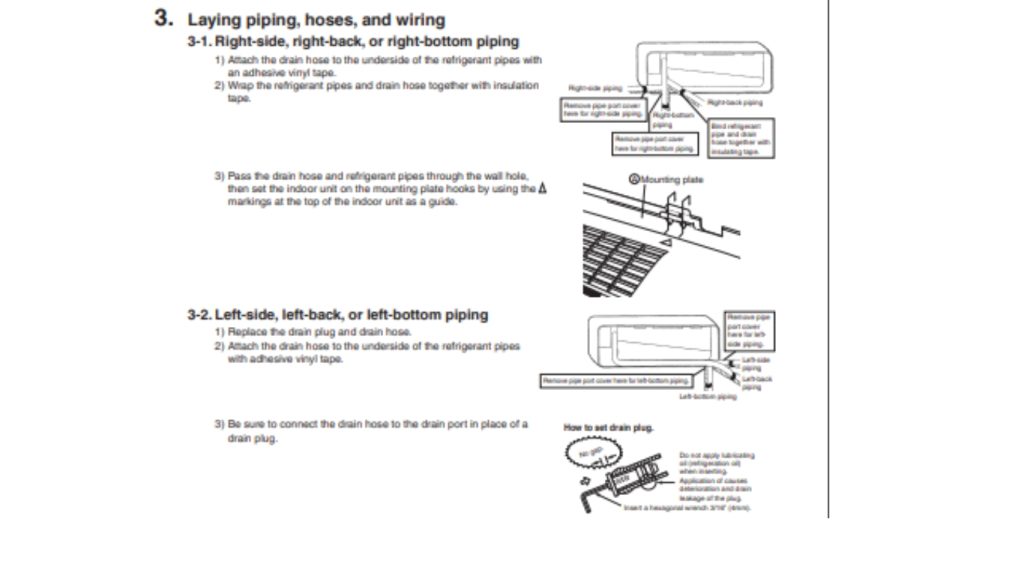
Testing And Finalizing The Installation
Once the Daikin AC unit is properly installed, it’s time to test and finalize the installation. This crucial step ensures that everything is functioning correctly and that the user can enjoy optimal comfort and air quality. In this guide, we will walk you through the necessary steps to power on the Daikin AC unit, test its functionality, adjust the settings, program the remote control, and provide maintenance tips and aftercare instructions.
Powering On The Daikin Ac Unit And Testing Its Functionality
The first step after installation is to power on the Daikin AC unit and ensure it is functioning properly. Here’s how you can do it:
- Locate the power switch or button on the AC unit. It is usually located near the control panel or on the side.
- Press the power switch or button to turn on the unit. You may hear a beep or see the display light up, indicating that the unit is receiving power.
- Check the display panel for any error codes or messages. If everything is working fine, you should see the desired temperature and mode settings.
- Feel the air coming out of the vents to ensure that it is cool or warm, depending on your desired temperature setting. If the air feels abnormal or there is no airflow, there may be an issue that needs to be addressed.
Adjusting The Settings And Programming The Remote Control
Once the Daikin AC unit is turned on and functioning properly, you can proceed to adjust the settings and program the remote control for easy operation. Here’s how:
- Using the control panel on the AC unit or the remote control, navigate through the different settings such as temperature, fan speed, mode (cool, heat, auto, etc.), and airflow direction.
- Make sure to set the temperature according to your comfort level, and select the appropriate mode for your needs.
- If your unit comes with a remote control, follow the instructions in the user manual to program it. This will allow you to conveniently control the AC unit from anywhere in the room.
- Experiment with the different settings and modes to find the optimal configuration that suits your preferences.
Providing Maintenance Tips And Aftercare Instructions To The User
Proper maintenance is key to keeping your Daikin AC unit running efficiently and prolonging its lifespan. Here are some maintenance tips and aftercare instructions:
- Clean or replace the air filters regularly to ensure proper airflow and prevent dust accumulation.
- Keep the outdoor unit free from dirt, debris, and obstructions by regularly cleaning the area around it.
- Inspect the AC unit for any signs of leakage, unusual noises, or performance issues. If you notice any, contact a professional technician for assistance.
- Schedule professional maintenance at least once a year to have the AC unit serviced and ensure its optimal performance.
- Follow the guidelines in the user manual for additional aftercare instructions specific to your Daikin AC unit model.
By following these steps and tips, you can confidently test and finalize the installation of your Daikin AC unit. Enjoy the comfort and fresh air that Daikin brings to your space!

Frequently Asked Questions For Daikin Ac Unit Install Guide
How Much Does It Cost To Install A Daikin Ac Unit?
The cost of installing a Daikin AC unit can vary depending on various factors such as the size of the unit, additional system components needed, and installation complexity. On average, you can expect to pay around $3,000 to $7,000 for a Daikin AC unit installation.
It’s best to get quotes from qualified HVAC professionals for a more accurate cost estimate.
What Size Daikin Ac Unit Do I Need?
Determining the right size of the Daikin AC unit for your space is crucial for optimal performance and energy efficiency. Factors such as square footage, ceiling height, insulation, and climate must be considered. Consulting with an HVAC professional is recommended to ensure you get the right size unit for your specific needs.
How Long Does It Take To Install A Daikin Ac Unit?
The installation time for a Daikin AC unit can vary depending on various factors such as the complexity of the installation, the size of the unit, and the condition of existing ductwork. On average, a standard installation can take between 4 to 8 hours.
However, more complex installations or additional system components may require longer installation times.
Conclusion
To ensure a successful installation of your Daikin AC unit, follow this comprehensive guide. From selecting the right location to proper wiring and testing, every step is covered to ensure efficient cooling and longevity. By carefully adhering to the installation instructions and tips provided, you can maximize the performance of your AC unit and enjoy a comfortable indoor environment.
So, get started on your installation journey and experience the benefits of a well-functioning Daikin AC unit today.

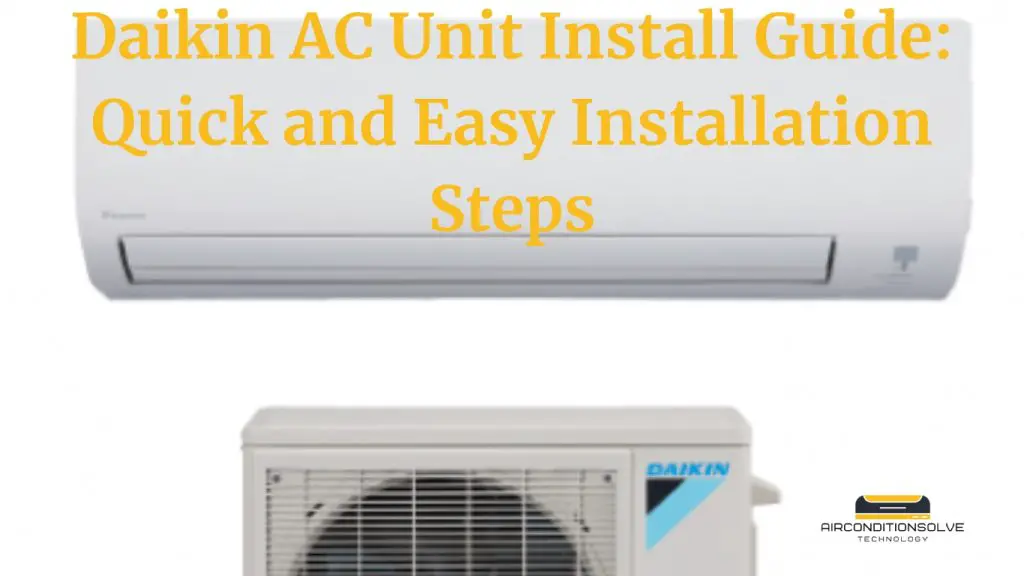
1 thought on “Daikin AC Unit Install Guide: Quick and Easy Installation Steps”
Pingback: AC Compressor Locked Up Car Won't Start: Fixing Guide - Air Conditioner
Comments are closed.